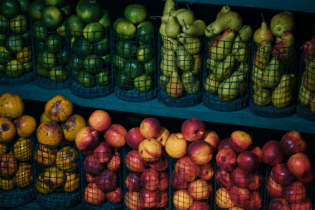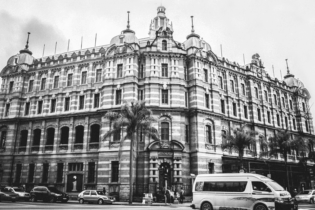The increase in maritime traffic around the southern tip of Africa has increased the demand for ship repairs and refitting. We look at South Africa’s capability.
South African ports are strategically placed along one of the World’s most important shipping routes. And, out of necessity, our ports are ever changing to accommodate the growing needs of containerised and break bulk shipping.With a ship’s trading costs ranging between R160 000 and R800 000 per day, dependent on size, the priority of the ship’s owners is to transport cargo from the port origin to the port of destination without any delays or breakdowns. Any unplanned port entry for repairs and/or refitting, due to any unfortunate incident, hits the bottom line. Because of this and the high daily operating costs, safety permitting, ship captains tend to delay repairs and/or refitting to the next planned port of call. South Africa thus needs to have adequate capabilities and facilities to accommodate such emergencies and affect repairs or refitting in a short a time frame as possible. This means that all our major ports need to be in a position to accommodate these needs. Capabilities
South Africa fortunately does not have a shortage of marine engineers. According to the South African Institute of Marine Engineers & Naval Architects, despite many local marine engineers serving offshore in various parts of the World, overall membership is quite healthy. The main shipbuilding, repair and refitting companies are Associated Marine Engineers, DCD-Dorbyl Marine, Dormac, Elgin Brown & Hamer and SA Shipyards. Unlike other international shipyards, South Africa does not build large ships. Given that we are a major iron and steel producer, we should look at beneficiation and the possibility of doing so. The SA Navy is certainly behind the idea. Facilities
The only commercial dry-docks along South Africa’s coastline capable of taking largish ships are found in Durban and Cape Town. Even so, by international standards, these dry docks are regarded as ‘small’.
The largest and oldest dry dock of its kind in the Southern Hemisphere, the Sturrock Dry-dock is located in the Port of Cape Town. It has an overall docking length of 360 m, a bottom length (dock floor) of 350.4 m, a width at the entrance top of 45.1 m, a width at bottom (dock floor) of a maximum 38.4 m and a depth over the entrance sill (HWOST) of 13.7 m. A docking length of 369.6m can be obtained by placing the caisson in the emergency stop at the entrance. The dock can be divided into two compartments of either 132.5m and 216.1m or 205.7m and 142.9m respectively.
A second dry-dock, the Robinson Graving Dock, has an overall docking length of 161.2 m, a bottom length of 152 m, a width at entrance of 20.7 m and a depth over the entrance sill (HWOST) of 7.9 m. Two cranes provided.
A repair quay, with its 475 m length and allowable draft of 12 m is equipped with two cranes, one of 15 tons and the other of 4 tons.
A synchrolift is also available. It has a lifting capacity of 1 778 t, a maximum vessel length of 61 m and a maximum vessel width of 15 m.
Durban is South Africa’s busiest port. The Prince Edward Graving Dock can be separated into two separate compartments, one of 206.9 m and the other 138.7 m. The dock can be emptied in four hours and has five electric cranes ranging from 10 t to 50 t. The width at entrance top is 33.52 m and the width at coping is 42.21 m. The depth at entrance (mean high water springs (MHWS)) is 12.56 m and the depth on the inner sill (MHWS) is 13.17 m.The floating dock has an overall length of 100 m and its length on keel blocks is 95 m. It has an overall width of 21.6 m and a width at entrance of 22 m. The height on keel blocks is 1.4 m and the draft on keel blocks at MHWS is 6 m. The floating dock has a lifting capacity of 4 500 t. It has two five ton electric cranes capable of traversing the dock’s full length on the port and starboard sides. South Africa’s commercial dry-dock facilities are owned and managed by Transnet National Ports Authority (TNPA).
There is a third dry-dock. However, it is located in Simon’s Town’s naval base. It has a maximum length capacity of 220 m with a maximum width of 28.9 m. Its syncrolift has a lifting capacity of 1 880 t. Looking to the future
The port of Durban is constrained for space. With container traffic growing at 22% per annum, discussions have suggested moving ship repair activities to Richards Bay. However, there have been many obstacles including land lease agreements, which have now been resolved. Sadly, the stop/go/stop approval process for the planned R3.5-billion ship repair facility in Richards Bay is set to continue. Ronnie Bevan of Sturrock Shipping in Richards Bay advises that a decision has been taken by the TNPA to put the project on hold as expansion plans to accommodate increased coal exports at Richards Bay must take precedence. This decision, in some quarters, is regarded as an error of judgement.
As Chris Sparg, MD of Dormac explains, “Ships require scheduled dry-docking and need to be fully offloaded to dry-dock. As it is ideal to dry-dock in a port where the ship is fully offloaded, Durban is opportune for containerships, but then so are other ports on the route. Ship owners should not be inconveniently bound to one port but to rather have options open to them. This is critical as we compete internationally.” South Africa has some of the roughest seas. Weather damage and collisions occur, either underway or at anchor.








